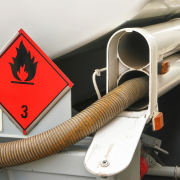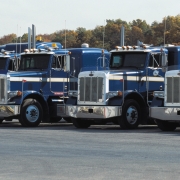
All trucking fleets have safety standards, so why is a safety incentive program so important? A safety incentive program can help motivate drivers to high standards AND help document strong safety behaviors. Incentive programs keep the focus positive. As an employer, you encourage the right behavior while also boosting company morale. This type of program infrastructure can be a great way to build driver loyalty and accomplish several safety priorities simultaneously.
Do I Really Need Safety Incentives?
The short answer is yes. Here’s why.
Most trucking companies have safety procedures and expectations, and some may also have specific metrics for their drivers. Fleet safety should be a high priority, and incentive programs are an excellent way to communicate that to drivers and encourage behavior changes.
While it may not be glamorous, fleet safety and tracking are key to regulatory compliance. In the event of a safety incident, you may need to be able to demonstrate safety protocol among your team.

An incentive program can encourage drivers to record their safe driving and creates a positive feedback loop. An incentive program that rewards strong performance is also good for company culture and team morale. Everyone wants to be recognized for a job well done, even if it is a job expectation. There’s also an undeniable benefit to your bottom line. A strong company culture is likely to reduce driver turnover, and that’s a tremendous economic advantage.
The benefits of a well-run safety incentive program also extend to recruiting and marketing. In addition to building internal morale, companies can build off a strong reputation and safety-centric messaging in marketing and recruitment efforts. Use driver recognition and feedback to help create positive brand recognition as a recruitment tool.
What Should Be Part of a Safety Incentive Program?
A thoughtful safety incentive program has several distinct characteristics. First, if you are offering monetary incentives, offer enough to be meaningful to drivers. The exact amount will vary based on your location, the type of driver, and your standard compensation package. If a meaningful monetary incentive is out of the question for you, consider other ways to reward drivers. Internal or external recognition, visible insignia for drivers to show off, and flexible home time are just a few non-monetary possibilities that will still motivate drivers. Not all employees are motivated by the same thing, so you may also consider implementing a multi-pronged incentive program. Ultimately, decide what you are best able to offer, and create a strong program based on your resources.
If a meaningful monetary incentive is out of the question for you, consider other awards that benefit drivers. There are many ways to motivate and reward hard work.
As you design or reshape your safety incentive program, keep sustainability and structure top of mind. Ensure that the program you develop is sustainable for your current and future staff. Even though safety incentive programs are often supplementary to other safety efforts, they take time to maintain. Design something within your capacity. In addition, make sure the safety program is incentivizing the right behavior. For example, a program based solely around mileage may be unintentionally encouraging drivers to drive beyond their safe limits. Thoughtfully determine success metrics when you launch the program. Then, adjust the metrics as needed when you determine points of improvement.
When to Offer Safety Incentives (And When They Won’t Work)
A successful implementation strategy for incentive programs effectively identifies “When.” Common choices for the program cycle are quarterly or annual rewards. To decide what is best for your fleet, you may need to consider the types of jobs you offer. Will your incentive program be effective for both local and regional drivers? If you prioritize safe driving miles, do drivers have similar routes? Or do some drivers have primarily rural routes while others are largely urban? How will this impact drivers’ ability to perform well in your program?
To decide what is best for your fleet, you may need to consider the types of jobs you offer. Then, decide what driver metric you will measure and how drivers will accumulate rewards.
Another timing question to consider is about rewards accrual. Will incentives accumulate for drivers or will they start clean for each new time increment? Similarly, decide whether to offer tiers of incentives or whether you will regularly feature a set of drivers like an employee of the month. Regardless of how you structure the program, start incorporating training and clear safety policies from the beginning as part of driver orientation.
How to Communicate Safety Incentives to Drivers
 Early and often is the best rule of thumb for sharing a safety incentive program with drivers. Set clear expectations at the start so that drivers know how to succeed. Based on your metrics for driver incentives, tell drivers exactly what they need to do. The results should be measurable, so drivers feel it’s a fair and attainable goal. Then, share the program in clear, simple language so there’s no confusion or feeling of mystery!
Early and often is the best rule of thumb for sharing a safety incentive program with drivers. Set clear expectations at the start so that drivers know how to succeed. Based on your metrics for driver incentives, tell drivers exactly what they need to do. The results should be measurable, so drivers feel it’s a fair and attainable goal. Then, share the program in clear, simple language so there’s no confusion or feeling of mystery!
When you talk about the safety incentive program with drivers, make sure to convey the program as a reward! Internally define the program objective, then highlight the benefits and positive rewards to drivers. Avoid a system that is punitive and focuses on how drivers lose points. If designed and communicated well, your safety incentive program will stand out as a positive differentiator from other companies.













